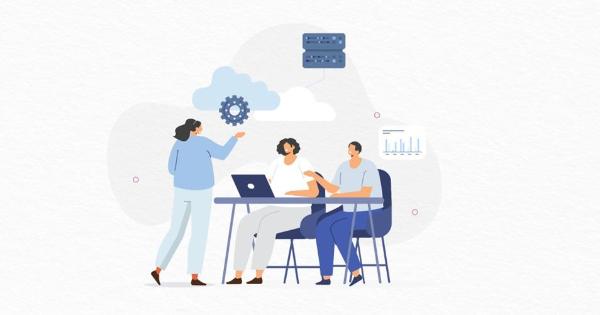Top 5 Cloud FinOps strategies for 2024
As we step into 2024, Cloud Computing continues its rapid expansion, with global spending on cloud services projected to surpass a trillion dollars by the end of 2024. In this landscape, efficient cloud cost management has become paramount, and Cloud Financial Operations (FinOps) emerges as the strategic cornerstone for organizations seeking to optimize costs and drive operational excellence.
Against this backdrop, this article delves into the pragmatic realm of Cloud FinOps, steering away from the speculative, and embracing concrete strategies grounded in industry insights and real-world applications. We will explore five key strategies that are poised to define Cloud FinOps in 2024. These strategies aren't mere predictions; they are drawn from the current dynamics of cloud technology and the evolving needs of organizations. We will dissect these strategies, providing actionable insights to empower organizations in navigating the financial intricacies of the cloud.
1. Dynamic Resource Optimization:
In the dynamic world of cloud computing, optimizing resources in real-time is a game-changer for effective Cloud FinOps. Dynamic resource optimization involves aligning resource allocation with the actual demand, ensuring a balance between performance and cost efficiency.
Dynamic resource optimization is not just about adjusting resources on the fly; it's a strategic move that can lead to substantial cost savings. By leveraging automation and machine learning algorithms, organizations can analyze usage patterns, forecast demand, and dynamically scale resources. This adaptability ensures that resources are allocated optimally, responding to the changing needs of the workload.
To implement dynamic resource optimization successfully, organizations should invest in advanced cloud cost management tools and embrace machine learning algorithms. By doing so, they can achieve an agile infrastructure that adapts to fluctuating workloads, resulting in significant cost reductions.
2. Real-time Cost Visibility and Monitoring:
A cornerstone of effective Cloud FinOps is having real-time visibility into costs. Organizations need to monitor their cloud spending in real-time, allowing for proactive decision-making and immediate responses to any unexpected deviations from budget projections.
Real-time cost visibility is a crucial element for staying on top of cloud expenditures. Having detailed insights into costs through robust cloud cost management platforms empowers Cloud FinOps teams to set up alerts, ensuring quick responses to budgetary thresholds and avoiding unnecessary overspending.
Organizations should invest in cloud cost management platforms that provide detailed, real-time dashboards, enabling Cloud FinOps teams to make informed decisions. Setting up automated alerts for cost thresholds ensures that any unexpected spikes are addressed promptly, maintaining financial control.
3. Cultivating a FinOps Culture:
Transitioning to a FinOps culture is more than just a shift in methodology; it's a cultural transformation that involves breaking down silos between finance, operations, and development teams. Collaboration and shared responsibility become the driving force behind effective Cloud FinOps.
A FinOps culture fosters collaboration and communication across different departments, ensuring that everyone understands the financial implications of their actions in the cloud. This collaborative approach breaks down traditional barriers, creating a unified team with a shared responsibility for cloud cost management.
To cultivate a FinOps culture, organizations should establish cross-functional Cloud FinOps teams, encourage open communication, and provide training to ensure that all team members understand the financial impact of their cloud-related activities. This cultural shift enhances transparency and accountability; essential elements for successful Cloud FinOps.
4. Strategic Utilization of Reserved Instances:
Reserved Instances (RIs) play a vital role in achieving cost predictability and savings in Cloud FinOps. However, to maximize their benefits, organizations need a strategic approach to align reservations with actual resource requirements.
Optimizing the utilization of Reserved Instances ensures that organizations are not only benefiting from cost predictability but also making the most out of their reserved capacity. A strategic approach involves analyzing historical usage data and accurately forecasting future resource needs.
By leveraging cloud cost analytics tools, organizations can assess historical usage patterns, identify opportunities for optimization, and make informed decisions regarding the purchase and utilization of Reserved Instances. Continuous refinement of reservation strategies ensures ongoing cost savings.
5. Automation for Operational Excellence:
Automation emerges as a critical component for achieving operational excellence in Cloud FinOps. By automating routine tasks, organizations can streamline processes, reduce manual errors, and enforce policies consistently, contributing to overall efficiency.
Automation can not only save time and effort but also ensure that operational tasks are performed consistently and accurately. Whether it's scaling resources, scheduling tasks, or enforcing governance policies, automation plays a crucial role in maintaining a well-architected and cost-efficient cloud environment.
Integrating automation tools into Cloud FinOps workflows is essential for success. Organizations should focus on automating repetitive tasks, implementing resource scaling based on predefined policies, and ensuring that governance frameworks are consistently applied across the cloud environment.
Embracing Cloud FinOps in 2024:
As organizations gear up for the challenges and opportunities that lie ahead in 2024, embracing these Cloud FinOps strategies positions them for success. The synergy of dynamic resource optimization, real-time cost visibility, a FinOps culture, strategic utilization of Reserved Instances, and automation creates a robust framework for navigating the evolving landscape of cloud financial operations.
In conclusion, Cloud FinOps is not just a set of strategies; it's a dynamic and evolving discipline that requires a strategic blend of technology, culture, and collaboration. By incorporating these top five Cloud FinOps strategies, organizations can harness the power of the cloud efficiently, ensuring cost-effectiveness and operational excellence in the year 2024 and beyond.

